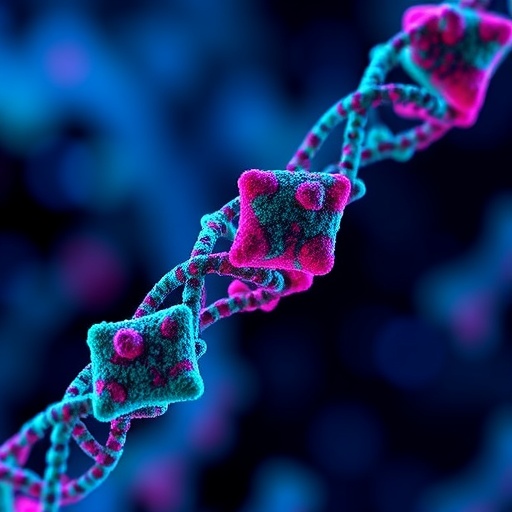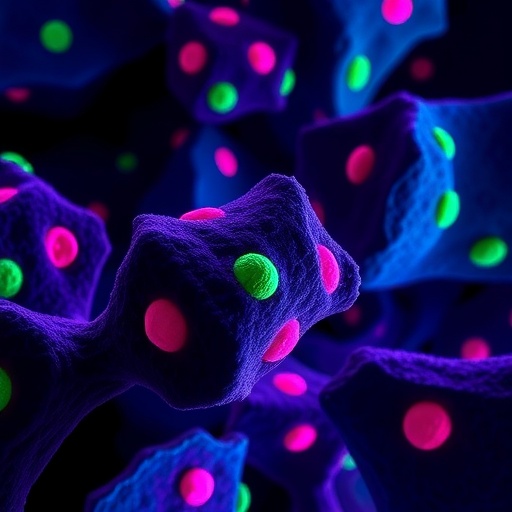
An innovative research endeavor led by an international team from the University of California San Diego has unveiled a remarkable strategy aimed at enhancing the production capabilities of Chinese hamster ovary (CHO) cells. These cells are pivotal in the manufacturing of protein-based pharmaceuticals, which are critical in treating a variety of ailments, including cancer and autoimmune diseases. By eliminating a specific gene circuit that is responsible for the production of lactic acid—known to create a toxic environment for the cells—the researchers have successfully addressed a significant obstacle in the quest for higher yields of essential drugs such as Herceptin and Rituximab. This breakthrough has the potential to drastically improve the efficiency of pharmaceutical manufacturing, providing hope for better availability of life-saving medications.
The findings from this research endeavor were published in a recent issue of the prestigious journal Nature Metabolism. The implications of this work challenge established notions regarding the role of lactic acid metabolism in cell viability. CHO cells have become indispensable to modern medicine, often referred to as “living factories” as they account for over half of the world’s top-selling protein-based therapeutics. However, their low protein yield has been a longstanding issue, limiting their effectiveness in meeting therapeutic demands and increasing the costs of essential medicines.
In the process of protein production, CHO cells generate lactic acid as a metabolic byproduct. This process becomes exacerbated as the cells ramp up their activity, leading to a higher concentration of lactic acid that ultimately becomes detrimental to cell survival. Senior author Nathan Lewis emphasizes the gravity of this issue, stating that as CHO cells increase drug production, the buildup of lactic acid can compromise their viability and subsequently reduce the yields of crucial pharmaceuticals.
Traditional approaches to mitigating lactic acid production have centered on inhibiting the enzyme lactate dehydrogenase, which plays a vital role in this metabolic pathway. However, these strategies have proven problematic; lactate dehydrogenase is essential for cellular survival. Any efforts to inhibit this enzyme typically result in cell death, an outcome thoroughly documented in the scientific literature.
In a groundbreaking shift from prior methodologies, Lewis and his co-authors embarked on an extensive mapping of the gene networks controlling lactic acid production in CHO cells. Their exploration revealed a complex interplay of five genes specific to CHO cells and six that are shared with human cells. This analytical approach allowed the team to hypothesize that disrupting this gene circuit could effectively reduce lactic acid production without sacrificing cell health.
The results were promising. By knocking out the identified gene circuit responsible for lactic acid production, the modified CHO cells no longer generated this harmful byproduct. In addition to halting lactic acid accumulation, these cells exhibited enhanced growth rates and significantly increased yields of valuable protein-based drugs, including Herceptin, used for breast cancer, and Rituximab, a treatment for lymphoma. Remarkably, these engineered cells were also capable of producing a wide range of other therapeutic proteins, such as Enbrel for rheumatoid arthritis and erythropoietin, critical for stimulating red blood cell production.
The implications of this study extend beyond just improving cell yields; they also contribute to a deeper understanding of the Warburg effect. Historically defined by its association with cancer metabolism—where cells undergo a shift that results in the overproduction of lactic acid—the Warburg effect was believed to be vital for cellular energy production and proliferation. However, the findings from this study suggest that the Warburg effect may not be as indispensable as once thought.
By effectively nullifying the Warburg effect in CHO cells, the researchers observed that these modified cells sustained their growth and energy production rates. Such observations cast doubt on long-cherished beliefs about the necessity of lactic acid in cell metabolism and proliferation, marking a potential paradigm shift in cellular biology research and applications.
Crucially, the engineered “Warburg-null” CHO cells are compatible with existing industrial cell line development processes, paving the way for their integration into large-scale biomanufacturing. This alignment with industrial practices means that the newfound enhancements in drug production could soon become a reality in pharmaceutical development, presenting a significant opportunity to optimize production efficiency and reduce manufacturing costs across the industry.
As the research team continues to explore additional modifications that could further amplify CHO cell productivity, they remain focused on the overarching goal of making drug production more efficient. Nathan Lewis remarks on the transformative potential of this work, explaining that it holds promise for lowering the costs of manufacturing life-saving therapies, thus improving accessibility for patients worldwide.
This study represents a significant advance in biotechnology and metabolic engineering, with far-reaching implications for the future of drug production. As the team prepares to publish their findings, they are also considering the ethical dimensions and potential regulatory pathways that could follow the implementation of their engineered CHO cells in therapeutic contexts. Overall, this research has the potential not only to redefine pharmaceutical production but also to inspire a new era of accessibility and affordability in medical treatments.
In summary, the successful modification of CHO cells presents an exciting opportunity to leverage genetic engineering in enhancing biopharmaceutical production. The prospect of integrating these innovations into existing manufacturing frameworks could significantly impact global health outcomes, making essential therapies more widely available and less costly. With ongoing research and development, this breakthrough has the potential to change the landscape of drug manufacturing for years to come.
Subject of Research: Enhancing pharmaceutical production in CHO cells through genetic modifications.
Article Title: Multiplex genome editing eliminates lactate production without impacting growth rate in mammalian cells.
News Publication Date: 14-Jan-2025.
Web References: Nature Metabolism
References: N/A
Image Credits: N/A
Keywords: CHO cells, biopharmaceuticals, lactic acid, Warburg effect, drug production, biotechnology, metabolic engineering, genetic modification.





